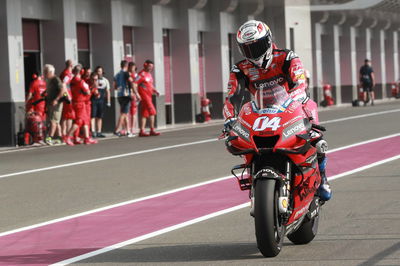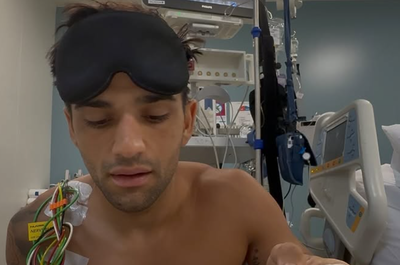The return of the Finnish MotoGP
For the first time since 1982, MotoGP is returning to Finland to race at the purpose-built KymiRing in the latest expansion to the sport’s horizons as organisers look to old and new destinations.
Finland represents both the familiar and unknown to MotoGP given its rich history in the Scandinavian country until safety concerns forced it out of its roots, like many other venues which dropped off the calendar during the same period.
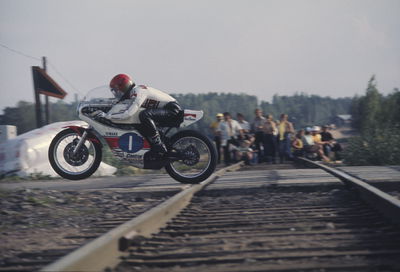
For the first time since 1982, MotoGP is returning to Finland to race at the purpose-built KymiRing in the latest expansion to the sport’s horizons as organisers look to old and new destinations.
Finland represents both the familiar and unknown to MotoGP given its rich history in the Scandinavian country until safety concerns forced it out of its roots, like many other venues which dropped off the calendar during the same period.
MotoGP’s drive to new countries has seen Thailand join the calendar, with Finland the next up this year plus plans to returns to Indonesia and Brazil which are gathering momentum.
Tampere hosted the first Finnish Grands Prix in 1962 and 1963, with Mike Hailwood winning the 500cc and 350cc races in the second year, before motorcycle’s top level event in the country moved on to the closed public road circuit Imatra from 1964.
Imatra, a 6.030km road racing circuit which contained just seven corners and saw riders reach top speeds of almost 300km/h, hosted world championship racing for 19 years and became an iconic venue for the sport in the 1960s and 1970s.
Giacomo Agostini notched up 16 career wins at the track (10 in 500cc, six in 350cc), with images of the legendary Italian and his rivals racing over the railway tracks that cut through the circuit the famous money shots of the peculiar layout.
Held in early August meant for very short nights and long days due to its northern location, while it gave off a festival atmosphere with tents used as garages and fans camping at the track as the local towns simply didn’t have the space to accommodate all the spectators which flocked to the race.
The region also had a sense of intrigue located next to Lake Vuokski and within sight of the Soviet Union border.
As speeds and associated risks increased, so did the dangers of racing at Imatra, which was the ultimate downfall of the circuit on closed public roads.
1981 was the last Finnish Grand Prix will a full undercard of racing, as the premier class 500cc championship opposed to going back to Imatra in 1982 over safety fears racing between the woodlands and unguarded telephone poles which lined the track.
It meant only the 350cc, 250cc, 125cc and Sidecars competed in final year which turned out to be a tragic decision.
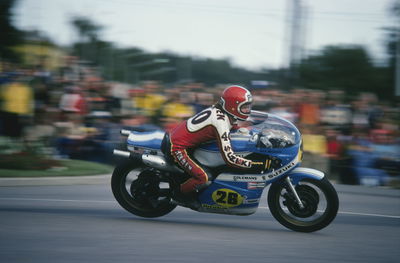
Image credit: Gold and Goose Photography
Jock Taylor, who won the Sidecar event at Imatra the year prior, died during 1982 Finnish Grand Prix Sidecar race when he was hit by a second Sidecar outfit after initially crashing out.
With safety concerns already heightened, there was no option but to stop the world championship from returning, but the Finnish circuit did continue to host European championship round until 1986.
Tragically, history cruelly repeated itself in 1986 when during the 500cc race Detlef Vogt crashed at the intersection close to the railway tracks and his bike hit a young family in the crowd, killing a young boy, with his elder brother, mother and father also seriously injured.
That effectively led to the circuit’s closure, aside from occasional classic event, but racing did return to Imatra in 2016 as part of the International Road Racing Championship.
In the following three decades that have passed since those terrible events, MotoGP safety standards have transformed to protect riders, marshals and fans as much as possible while efforts continue to be made to find improvements.
With short circuits in Finland up to the required MotoGP safety standards few and far between, the sport has coordinated with KymiRing officials, the Finnish Motorcycle Federation and UK-based Apex Circuit Design to construct an all-new multi-purpose venue which is sustainable, profitable and up to the top safety standards set by both the FIM and the FIA.
The track, located close to Tillol, is almost 4.6km long and will host the longest straight on the MotoGP calendar at 1.2km. The layout blends a fast and flowing first section with a tight and technical finish to the lap over 18 turns in total with a gradient change of 20m.
In August 2019, MotoGP completed an initial track test with each of the manufacturers’ respective test teams in action to provide feedback on where and how the circuit can be improved.
“Honestly it was a different race track to anything we’ve seen before,” Aprilia test rider Bradley Smith said of the track after the test last August. “It worries me, certain aspects of the track. When you put a whole load of guys and try and race around there that’s my question mark.
“Not wide enough and a little bit too tight. If there was a mistake there are a few corners where you could easily run off one and join another track with certain chicanes.
“We’ll see what happens. We have a year. I believe in Franco Uncini [FIM Safety Officer], in the FIM. The FIA and Liberty will go there at the end of the month and give their opinions. In the end we’ll be fine to race there next season.”
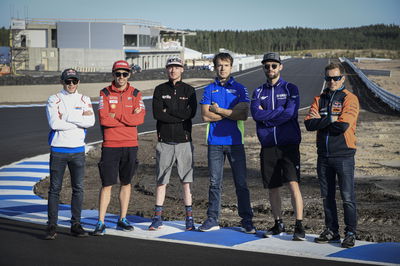
Finnish KTM test rider Mika Kallio, who appropriately was the first MotoGP rider on track at the test, is naturally optimistic his home nation can put on a successful welcome return motorcycle’s top level at KymiRing.
“I think for everyone if you can race at home it’s something special absolutely, and I was the first guy out with the MotoGP machine so that’s cool to be the first to make those laps,” Kallio said after the test.
“Some parts of the track are quite slow, at the moment and especially in these conditions and new tarmac. But hopefully we’ll get more of an impression of how the race track is.”
MotoGP is scheduled to carry out a two-day Michelin tyre test with all MotoGP test teams on June 15-16 before its debut race weekend, and while everything remains provisional amid the coronavirus pandemic, the return of the Finnish GP is set to take place on July 10-12.
Finnish GP organisers remain hopeful on avoiding as much disruption as possible in a rapidly changing race calendar caused by the global health crisis, but there is a chance the sport’s long-awaited return to Finland could go on a litte longer if the COVID-19 situation fails to improve in time.
